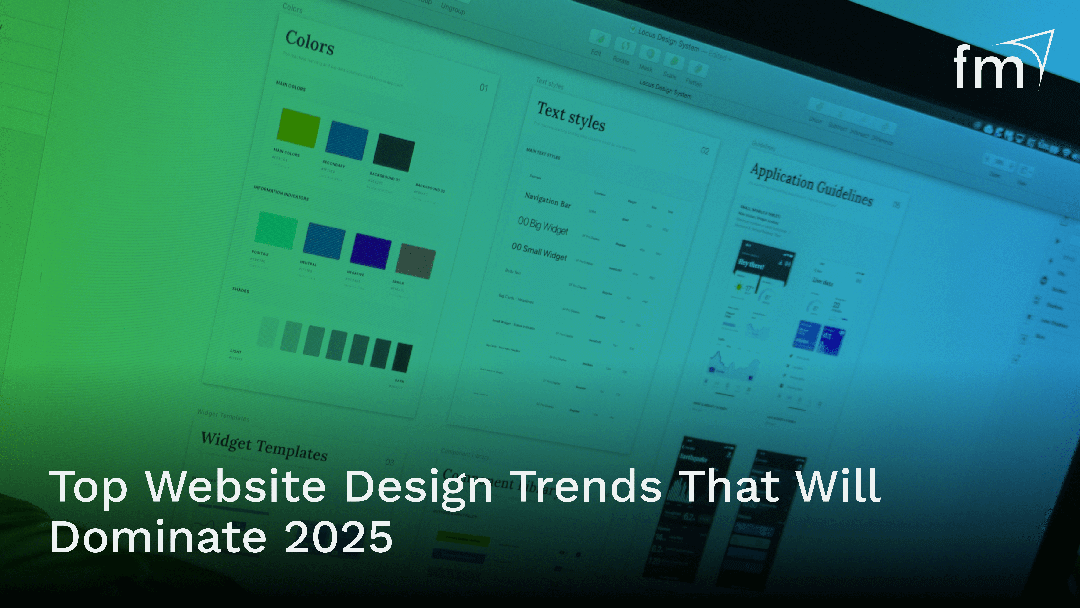Top Website Design Trends That Will Dominate 2025
How UX, CRO, and AI Are Reshaping the Digital Landscape
In 2025, website design is evolving faster than ever, powered by user expectations, AI innovations, and Google’s algorithm updates. To stay competitive, web designers and digital strategists must embrace trends that not only look good but also perform brilliantly. In this guide, we’ll break down the top website design trends for 2025, with a laser focus on UX and CRO, backed by expert insights and SEO-driven analysis.
Summary: Key Trends for 2025
Trend | Why It Matters |
AI Personalization | Boosts engagement + retention |
Conversion-Driven Minimalism | Increases clarity and conversions |
Hyper-Responsive Design | Improves UX across all devices |
Voice & Search Intent | Prepares for voice-first browsing |
Emotionally Intelligent UX | Builds trust and storytelling |
Accessibility-First Design | Required + SEO-boosting |
Micro-Interactions | Delight users and reduce friction |
SEO-First Structure | Aligned with Google’s HCS |
Explore our conversion-focused web design services.
AI-Enhanced Personalization: The New Standard for UX
Why it matters:
AI is no longer a nice-to-have — it’s the new foundation of smart website design. From real-time user behavior tracking to predictive content display, personalized UX powered by AI is rapidly improving engagement rates.
Stat to watch:
According to Salesforce, 73% of customers expect companies to understand their unique needs, and 62% expect personalization to go beyond the first name.
What it means for 2025:
- AI chatbots with natural conversation flows
- Dynamic content blocks based on user behavior
- Predictive product/service suggestions
UX Tip:
Use machine learning tools like Adobe Sensei or ChatGPT plugins to personalize landing page experiences in real time.
Conversion-Driven Minimalism (with Purpose)
Why it matters:
Less clutter, more action. Websites in 2025 are prioritizing intentional simplicity — a design trend that balances aesthetics with direct conversion goals.
What it looks like:
- Clear, high-contrast CTAs
- Strategic white space that guides the eye
- Interactive elements that enhance, not distract
Backed by data:
Google’s latest page experience update favors sites that load fast, are visually stable, and focus on core tasks. A clean interface reduces bounce rates and increases dwell time — two key signals for SEO.
See how we implemented conversion-driven minimalism in our Zeus Cycles case study.
Hyper-Responsive Design for Multi-Device Behavior
Why it matters:
Users are switching between mobile, tablet, desktop, and even wearable devices. In 2025, responsive design isn’t just about resizing — it’s about adaptive UX per screen and context.
What to optimize for:
- Thumb-friendly mobile navigation
- Context-aware layouts (based on time, device, or location)
- Fast-loading elements that perform under low bandwidth
Pro insight:
Google’s Mobile-First Indexing is now the norm. Responsive isn’t just about convenience — it’s critical for rankings.
Voice-Activated and Search-Intent-Driven Interfaces
Why it matters:
With the rise of AI assistants and smart devices, users are interacting with websites via voice commands more than ever.
How it’s changing design:
- Voice search optimization (long-tail, conversational keywords)
- Cleaner information architecture for faster voice response
- Schema markup and structured data to surface content in rich snippets
Example: A user might say, “Find a website designer near me who specializes in conversion optimization.” Your site needs to be ready.
Read our blog: 5 Tips to Skyrocket Your Website’s Conversion Rates
Emotionally Intelligent UX: Storytelling Meets Psychology
Why it matters:
Design that connects on a human level builds trust and converts. Emotionally intelligent UX uses visual cues, micro-interactions, and story-based design to guide decisions.
Tactics that work:
- Empathy maps and emotional journey mapping
- “Show, don’t tell” visuals in testimonials and case studies
- Psychological triggers (social proof, urgency, trust badges)
Quote from expert:
“Websites that evoke emotion have up to a 200% higher conversion rate. People buy with emotion, then justify with logic.”
— Nir Eyal, author of “Hooked”
Ethical Design and Accessibility-First Principles
Why it matters:
Accessibility is no longer optional — it’s legally and ethically mandatory. In 2025, inclusive design is good UX.
Key standards to follow:
- WCAG 2.2 compliance (expected to be enforced more strictly)
- Keyboard navigation and screen reader compatibility
- Color contrast and alt-text optimization
SEO bonus:
Accessible websites tend to rank better due to cleaner code, semantic HTML, and broader reach.
Are you curious if your website meets these standards?
Micro-Interactions That Delight and Inform
Why it matters:
Micro-interactions — small animations or feedback cues — create satisfying moments that improve engagement and reduce friction.
What to try:
- Button hover effects
- Loading animations with brand personality
- Real-time form validation messages
Users are 67% more likely to complete a form when feedback is instant and visual.
SEO-First Design Structure for Google's Helpful Content System
Why it matters:
Google’s Helpful Content System (HCS) rewards human-first, expert-authored content that serves clear intent. Design and SEO must now work hand-in-hand.
Checklist for 2025:
- Content designed in semantic HTML5 (sectioning elements, headings)
- FAQ blocks and featured snippet targeting
- Clear topic clusters with internal linking
Final Thoughts: Design with Depth, Optimize with Empathy
As we move through 2025, it’s clear that successful websites will be those that marry stunning visuals with smart UX and CRO strategy. Whether you’re refreshing a homepage or launching an entirely new brand, the trends above can help you create a site that’s not only beautiful — but built to perform.

